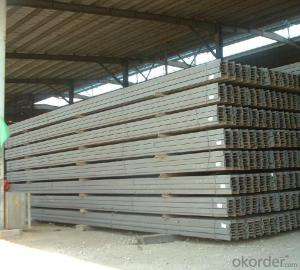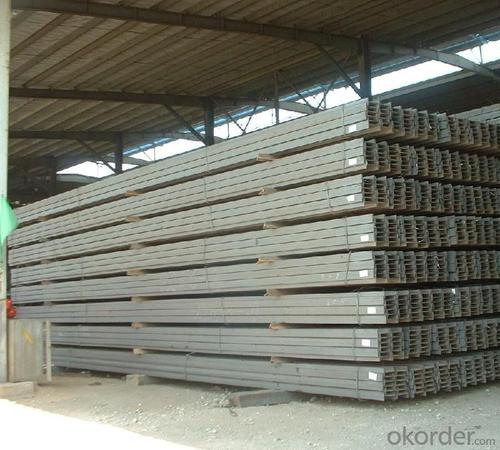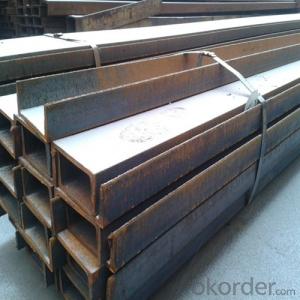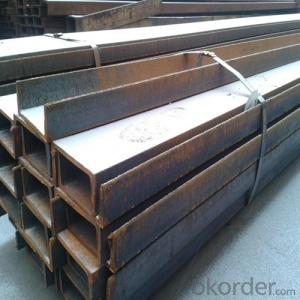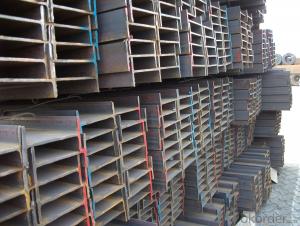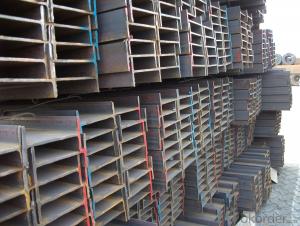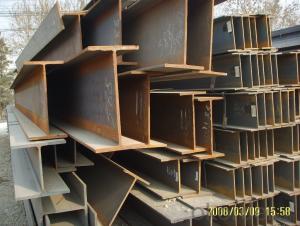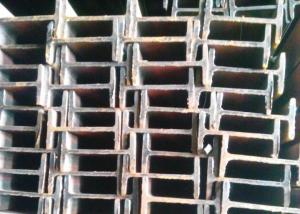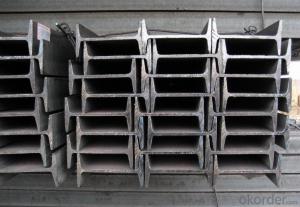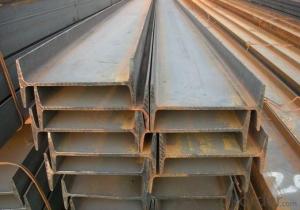European Standard IPE160 with High Quality
- Loading Port:
- Tianjin
- Payment Terms:
- TT OR LC
- Min Order Qty:
- 25 m.t
- Supply Capability:
- 15000 m.t/month
OKorder Service Pledge
OKorder Financial Service
You Might Also Like
Product Description of European Standard IPE160 with High Quality:
Specifications of European Standard IPE160 with High Quality:
1.Standard: EN10025
2.Material: S235JR or Equivalent
3.Length: 6m, 12m
4.Size:
Size (mm) | Mass (kg/m) |
| 160*82*5.0 | 15.80 |
Usage & Applications of European Standard IPE160 with High Quality:
Commercial building structure;
Pre-engineered buildings;
Machinery support structures;
Prefabricated structure;
Medium scale bridges.
Packaging & Delivery of European Standard IPE160 with High Quality:
1. Transportation: the goods are delivered by truck from mill to loading port, the maximum quantity can be loaded is around 40MTs by each truck. If the order quantity cannot reach the full truck loaded, the transportation cost per ton will be little higher than full load.
2. With bundles and load in 20 feet/40 feet container, or by bulk cargo, also we could do as customer's request.
3. Marks:
Color mark: There will be color marking on both end of the bundle for the cargo delivered by bulk vessel. That makes it easily to distinguish at the destination port.
Tag mark: There will be tag mark tied up on the bundles. The information usually including supplier logo and name, product name, made in China, shipping marks and other information request by the customer.
If loading by container the marking is not needed, but we will prepare it as customer's request.
FAQ:
We have organized several common questions for our clients, may help you sincerely:
1. How to inspect the quality?
We have a professional inspection group which belongs to our company. We resolutely put an end to unqualified products flowing into the market. At the same time, we will provide necessary follow-up service assurance.
We have established the international advanced quality management system,every link from raw material to final product we have strict quality test;We resolutely put an end to unqualified products flowing into the market. At the same time, we will provide necessary follow-up service assurance.
2. Is there any advantage about this kind of product?
Steel I beam bar IPE has a reduced capacity in the transverse direction, and is also inefficient in carrying torsion, for which hollow structural sections are often preferred.
Images of European Standard IPE160 with High Quality:
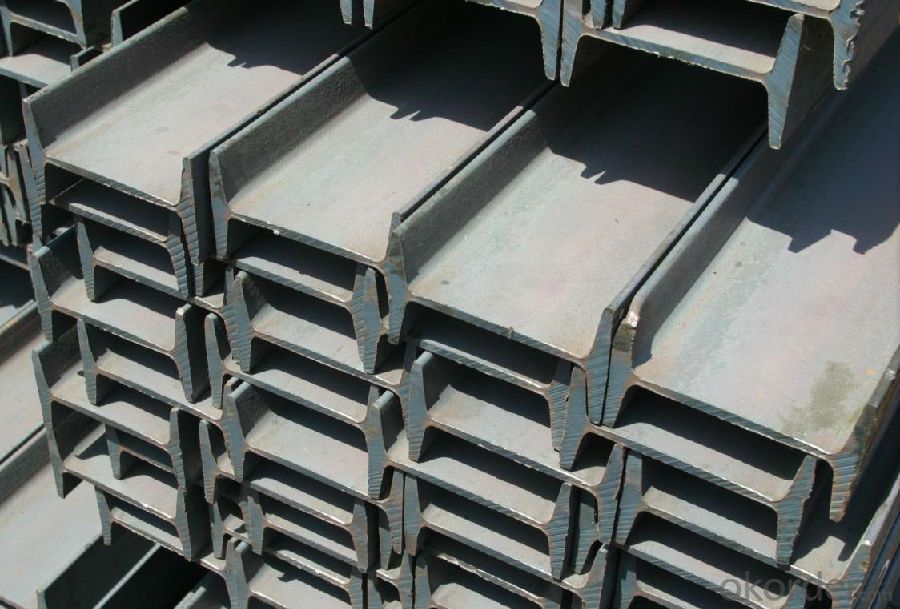
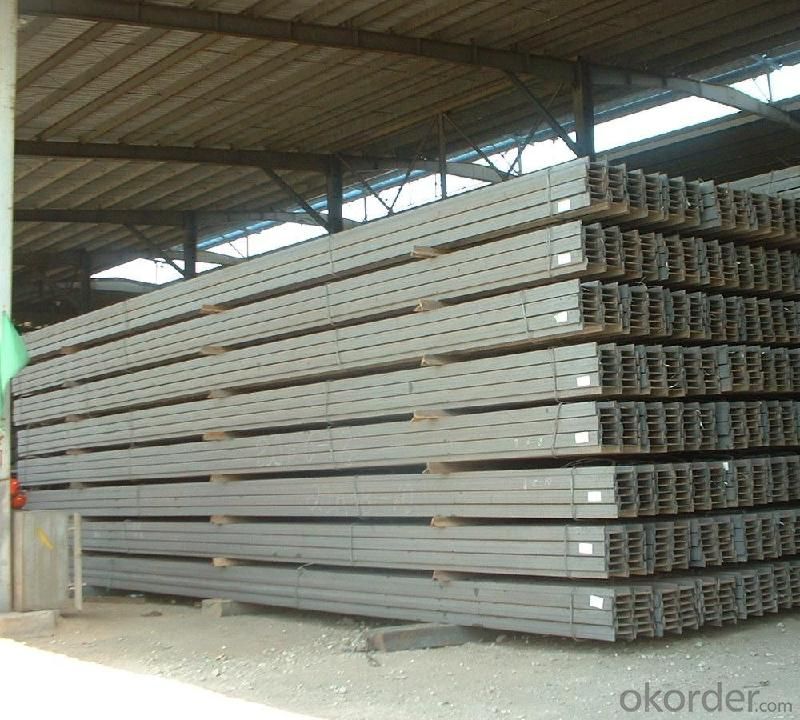
*If you would like to get our price, please inform us the size, standard/material and quantity. Thank you very much for your attention.
- Q: What are the typical lengths of steel I-beams?
- The specific application and manufacturer can cause variations in the typical lengths of steel I-beams. Steel I-beams commonly range from 20 feet to 40 feet in length, making them frequently employed in construction projects to ensure stability and structural integrity. Moreover, certain manufacturers may provide tailor-made lengths to fulfill project requirements. To ascertain the suitable length of steel I-beams for a particular application, it is crucial to consult with engineers and architects.
- Q: Are steel I-beams suitable for supporting rooftop swimming pools?
- No, steel I-beams are not suitable for supporting rooftop swimming pools. The weight of the pool, combined with the water and the people in it, would put too much stress on the beams, potentially leading to structural failure.
- Q: How long do steel I-beams typically last before needing replacement or maintenance?
- Steel I-beams possess a reputation for their durability and longevity, making them a favored selection for construction and engineering undertakings. The lifespan of these steel I-beams primarily relies on diverse factors including the caliber of the steel employed, the level of maintenance they receive, and the environmental conditions to which they are exposed. As a general rule, steel I-beams are engineered to endure for numerous decades without necessitating replacement or significant maintenance. With proper care and maintenance, they can easily persist for 50 years or longer. However, it is vital to bear in mind that specific factors can notably influence their lifespan. One pivotal factor is the quality of the steel and the manufacturing processes utilized. I-beams fashioned from high-quality steel and manufactured by reputable producers have a tendency to possess a lengthier lifespan in contrast to those derived from lower-grade materials. Rigorous inspections and quality control during the manufacturing procedure can also contribute to the durability of the I-beams. Another critical factor is the level of maintenance administered to the I-beams. Regular inspections, cleansing, and addressing any indications of damage or corrosion can aid in extending their lifespan. The application of protective coatings or rust inhibitors can likewise aid in preventing corrosion and deterioration. Environmental conditions can also impact the lifespan of steel I-beams. Exposure to severe weather conditions, extreme temperatures, excessive moisture, or corrosive substances can expedite the deterioration process. In such instances, supplementary maintenance and protective measures may be required to ensure the longevity of the I-beams. Ultimately, while steel I-beams are engineered to persist for numerous decades, it is crucial to conduct regular inspections and maintenance to guarantee their structural integrity. By adhering to recommended maintenance practices and promptly addressing any issues, steel I-beams can provide enduring support and stability for various structures.
- Q: What are the different types of steel reinforcements used in I-beams for renovations?
- I-beam renovations utilize different types of steel reinforcements. These include: 1. Mild Steel Reinforcement: The most common type, known for its strength, durability, and cost-effectiveness. Used when high strength is not necessary. 2. High-Strength Low-Alloy (HSLA) Steel Reinforcement: Offers higher strength and better corrosion resistance than mild steel. Used in structural applications with greater load-bearing capacity or in corrosive environments. 3. Carbon Steel Reinforcement: Contains higher carbon content, enhancing strength and hardness. Used in heavy-duty construction or applications requiring high strength. 4. Stainless Steel Reinforcement: Emphasizes exceptional corrosion resistance. Suitable for coastal or high-humidity areas and applications where aesthetics matter. 5. Galvanized Steel Reinforcement: Coated with zinc to protect against corrosion. Commonly used in outdoor or exposed settings exposed to moisture, chemicals, or harsh weather conditions. It is important to consider load-bearing requirements, environmental conditions, and budget constraints when choosing steel reinforcement for I-beam renovations. Consulting a structural engineer or construction professional is recommended to determine the most suitable reinforcement for a specific project.
- Q: What are the common applications for steel I-beams?
- Steel I-beams are commonly used in construction and engineering applications due to their strength and versatility. Some of the common applications for steel I-beams include: 1. Building construction: Steel I-beams are widely used in the construction of buildings, including both commercial and residential structures. They are used to provide structural support and stability, particularly for load-bearing walls and floors. 2. Bridges: Steel I-beams are also commonly used in the construction of bridges. They can support heavy loads and span long distances, making them ideal for bridge construction. 3. Industrial structures: Steel I-beams are frequently used in the construction of warehouses, factories, and other industrial structures. They provide a strong and durable framework for these buildings, allowing for the safe storage of heavy equipment and materials. 4. Mezzanine floors: Steel I-beams are often used to create mezzanine floors in buildings. These additional floors can be used to maximize space, providing extra storage or workspace without the need for additional construction. 5. Roof support: Steel I-beams are used in the construction of roofs, especially in large structures such as stadiums or warehouses. They offer structural support and stability, ensuring the roof can withstand heavy loads and adverse weather conditions. 6. Automotive industry: Steel I-beams are commonly used in the automotive industry for various applications, including the construction of car frames, chassis, and suspension systems. They provide strength and rigidity to ensure the safety and performance of vehicles. 7. Mining and infrastructure: Steel I-beams are utilized in mining and infrastructure projects, such as tunnels, underground structures, and supporting structures for heavy machinery. Their strength and durability make them suitable for these demanding environments. 8. Material handling equipment: Steel I-beams are often used in the construction of cranes, hoists, and other material handling equipment. They offer the necessary strength and stability to lift and move heavy loads safely. Overall, steel I-beams have a wide range of applications due to their strength, versatility, and ability to support heavy loads. From building construction to automotive manufacturing, their use is essential for various industries.
- Q: How do steel I-beams perform in high wind areas?
- Steel I-beams are widely used in buildings and bridges because they are strong and durable. In high wind areas, steel I-beams perform exceptionally well because of their inherent properties. To begin with, steel is a material with great strength, which allows I-beams to withstand high wind forces. The I-shaped design of the beam gives it excellent load-bearing capacity, making it highly resistant to bending or buckling under strong winds. This structural integrity ensures that buildings or bridges remain stable and reduces the risk of collapse or damage. Furthermore, steel I-beams have a high stiffness-to-weight ratio, which means they are lightweight yet extremely rigid. This characteristic is crucial in high wind areas because it helps to minimize the deflection and sway caused by wind gusts. The stiffness of steel I-beams reduces the potential for vibrations, ensuring that the structure remains stable even during severe wind storms. In addition, steel is a highly ductile material, meaning it can effectively absorb and dissipate energy. In the event of high winds, the flexibility of steel I-beams allows them to absorb the wind load and distribute it throughout the structure. This prevents the concentration of forces in one area and helps maintain the overall stability of the building or bridge. Moreover, engineers can design and engineer steel I-beams to meet specific wind load requirements. By considering factors such as wind speed, direction, and the structure's location, engineers can determine the appropriate size and spacing of I-beams to ensure optimal performance in high wind areas. This customization ensures that the structure is adequately protected against wind-induced forces. In conclusion, steel I-beams are highly effective in high wind areas because of their strength, stiffness, and ductility. Their ability to resist bending or buckling, their lightweight yet rigid nature, and their capacity to absorb and distribute wind load make them an ideal choice for structural applications in areas prone to strong winds.
- Q: How do you install steel I-beams correctly?
- To install steel I-beams correctly, the process typically involves careful planning, preparation, and following specific guidelines. Firstly, it is crucial to consult structural engineers or professionals to determine the appropriate size and type of I-beam for the specific application. After obtaining the required permits, the installation begins with preparing the support structure, which may involve removing existing components or constructing new foundations. The I-beams should be aligned and leveled accurately, ensuring proper support throughout the structure. Adequate bracing and welding or bolting techniques are then employed to secure the beams in place. It is essential to adhere to safety standards and regulations while handling and installing the I-beams to ensure a successful and safe installation.
- Q: What are the potential drawbacks or limitations of using steel I-beams?
- Using steel I-beams in construction projects presents several potential drawbacks or limitations. To start, steel I-beams tend to be heavier and bulkier in comparison to other building materials like wood or concrete. This can make transportation and handling more challenging, necessitating specialized equipment and additional labor. In addition, steel is prone to corrosion if not adequately protected. Exposure to moisture, chemicals, and harsh weather conditions can cause rusting, compromising the structural integrity of the beams over time. Regular maintenance and protective coatings are necessary to prevent corrosion and ensure the longevity of the steel I-beams. Another limitation is the cost associated with steel I-beams. Steel is an expensive material, and the fabrication and installation of I-beams can significantly inflate the overall construction budget. This can pose a challenge for projects with tight financial constraints. Moreover, steel I-beams have limitations in terms of design flexibility. Although they offer excellent strength and load-bearing capabilities, their shape and dimensions are predetermined. This restricts the architectural possibilities and can curtail the creativity and versatility of the building design. Lastly, steel I-beams have relatively poor thermal insulation properties. They conduct heat more efficiently than materials like wood or concrete, meaning they can contribute to heat loss or gain in a building. Additional insulation measures must be taken to ensure energy efficiency and maintain comfortable indoor temperatures. In conclusion, while steel I-beams are widely used and offer numerous advantages in construction, it is important to carefully consider their potential drawbacks such as weight, susceptibility to corrosion, cost, limited design flexibility, and thermal insulation limitations when selecting the appropriate building material for a specific project.
- Q: Can steel I-beams be used for mezzanine storage systems?
- Yes, steel I-beams can be used for mezzanine storage systems. Steel I-beams are commonly used in the construction industry due to their strength and durability. They provide a sturdy and reliable framework for mezzanine floors and can support heavy loads. Steel I-beams are often used to create a solid foundation for mezzanine storage systems, allowing for the efficient utilization of vertical space in warehouses, factories, and other industrial settings.
- Q: In steel engineering, what is called rigid connection? What is articulated? What kind of nodes or structural parts are applicable to the two? The more detailed the answer, the better!
- Rigid connection refers to the connection between two members of a rigid joint.In steel structures, for example, the I-beam is rigidly connected, which means that the two flanges are connected to the flange and the web, while the hinge is just the web connection. The flange is not connected.
Send your message to us
European Standard IPE160 with High Quality
- Loading Port:
- Tianjin
- Payment Terms:
- TT OR LC
- Min Order Qty:
- 25 m.t
- Supply Capability:
- 15000 m.t/month
OKorder Service Pledge
OKorder Financial Service
Similar products
Hot products
Hot Searches
Related keywords
